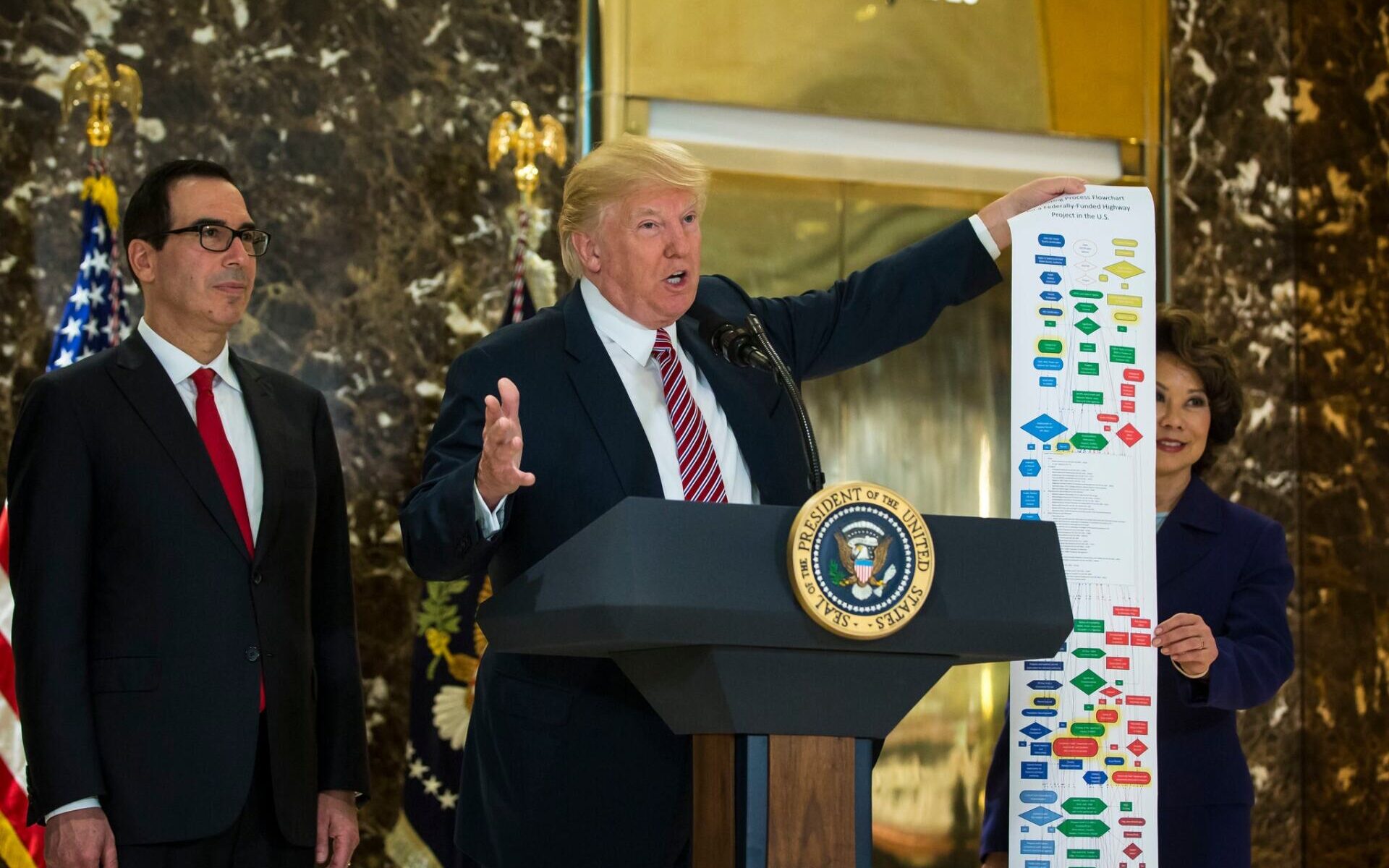VJEL Staff Editor: Madison Hertzog
Faculty Member: Jim Murphy
To Rebuild or Not to Rebuild? An Examination of NEPA and the Environmental Regulatory State
Where to begin? It is commonplace that a change of administration comes with alterations in law and policy. But when did a change in administration become synonymous with the systematic dismantling of the environmental regulatory state? To date, the Trump Administration has rolled back or reversed 104 major environmental policiesincluding those safeguarding clean water, air, and wildlife.
An apt example is the National Environmental Policy Act of 1970 (NEPA). NEPA was among the first of many laws intended to address a series of nationwide environmental crises a half-century ago where rivers were so polluted they were on fire; cities were choked with smog; and species like the bald eagle and gray wolf were at the brink of extinction.
NEPA expressly places environmental concerns at the forefront of federal decision-making. It requires that all federal agencies proposing a major agency action significantly impacting the quality of the human environment conduct a series of environmental assessments prior to acting. NEPA also established the Council for Environmental Quality (CEQ) within the Executive Office of the President to ensure that agencies comply with the terms of the Act and any proposed amendments to NEPA.
The text of NEPA itself is quite brief. As such, much of NEPA law and implementation derives from regulations promulgated in 1978 and supported by five decades of case law. Among other things, the 1978 regulations required extensive consideration of the direct, indirect, and cumulative impacts of agency actions and provided opportunities for robust public participation. Yet in July 2020, the CEQ finalized rules that upend the 1978 NEPA regulations to the praise of industry but over the objections of a vast majority of over 1.1 million public commenters.
Despite the Trump Administration’s claim that the final rule modernizes NEPA by increasing transparency, promoting early public involvement, and generally fast-tracking the review process, one doesn’t have to look too closely to realize this characterization misrepresents the new NEPA. Instead, the final rule is a nod to the oil and gas industry and its sympathizers who have long complained that NEPA review takes too long and imposes unnecessary restrictions upon projects. The primary effect of the new NEPA regulations is to transform NEPA from a look before you leap statute into a meaningless check-the-box exercise that fails to consider impacts and shortcuts public input.
Specifically, the final rule narrows the definition of “major federal agency action,” restricting the number of action that will even be subject to NEPA. It also seeks to substantially limit the universe of affects considered by agencies by removing references to “cumulative” and “indirect” effects well as segmentation of projects in order to avoid review. Additionally, the new rule vastly expands the ability of agencies to identify categories that do not need an environmental assessment. Furthermore, it places an artificial constraint on the time agencies may take to do reviews and limits the page length of such reviews without providing additional resources to meet these tight deadlines.
The practical effects of these new rules are that far fewer projects will undergo any form of NEPA review. Those projects that are subject to NEPA will undergo an artificially truncated process that makes public participation harder and fails to require the review of important environmental impacts like climate change.
The NEPA rule is just one example. There have also been multiple rollbacks crippling the Clean Water Act, Clean Air Act, Endangered Species Act, and many other bedrock environmental protections. Many of these regulatory rollbacks are in current litigation, and thus far, the challengers have won all but a handful of cases.
Given the massive extent of these rollbacks, reconstructing the regulatory state will be challenging for the Biden Administration. Take the NEPA example. The unfortunate reality is that the Biden CEQ cannot simply wave a wand and restore the 1978 rule. Instead, it must reinstate the 1978 NEPA through the formal rulemaking process, which takes time and resources. It is also possible that the Biden Department of Justice stops fighting court challenges to the rollbacks and either settles or withdraws these cases. However, that path may not avoid the need for rulemaking because the reviewing judge may order it anyway.
Another option is for the new Congress to use the Congressional Review Act (CRA) to pass legislation to overturn the CEQs amendments to NEPA. To be eligible for consideration, a rule must have been enacted within LX legislative days of a presidential election. Functionally, the CRA allows Congress to reconsider and, if necessary, overturn newly issued rules. Once a rule is overturned, the promulgating agency is prohibited from issuing any new rules that can be considered substantially similar. NEPA is one of many acts that would be eligible for reconsideration under the CRA. Use of the CRA would almost certainly depend on both the Biden Administration and a Democratic Congress. This will come with the political cost of convincing conservative Democrats to support the reversaland there will likely be many tough asks of these lawmakersas well as the risk of restricting the agency’s options for future rulemaking.
But a deeper question to consider is whether it is ideal to simply restore these regulations. For a variety of reasons, a return to the previous rules would be politically expedient and more protective than the rollbacksbut doing so may be a lost opportunity. However, many of the previous regulations were written decades ago and do not directly address currently pressing challenges, like climate change and environmental justice.
Although the Trump Administration is responsible for single handedly dismantling a large portion of the environmental regulatory state, it is possible this could provide a time for a proper reset. The laws and regulations attacked are old and while effective, may be imperfect tools for addressing twenty-first century challenges. A regulatory rebuild properly done could fix that.


